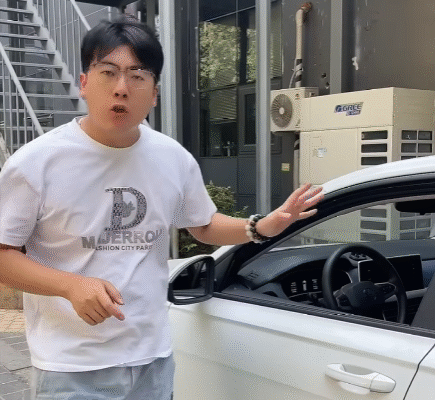
Most drivers use their car keys in the most basic way: to lock, unlock, and start the vehicle. But in reality, modern car keys are more advanced than many people realize. Thanks to technology like remote keyless entry, transponders, and smart key systems, your humble car key may hold several hidden functions that can make your driving experience safer, more convenient, and even a little fun. If you’ve ever wondered what else your car key can do beyond the obvious, you may be surprised at the hidden features waiting at your fingertips.
1. Remote window control
In many modern cars, holding down the unlock button on your key fob doesn’t just open the doors—it also lowers the windows automatically. This feature is especially useful on hot days when your car has been baking in the sun. With a long press, you can air out the cabin before even stepping inside. Similarly, some vehicles allow you to roll the windows up by holding the lock button. It’s a small function, but it saves time and reduces the heat inside your car.
2. Trunk release and hidden storage access
Most car keys today include a dedicated trunk release button. What many drivers don’t know is that some cars allow you to open just the trunk while keeping the rest of the vehicle locked, which is handy when loading groceries or luggage.
In certain vehicles, holding the trunk button for a longer period may even open hidden compartments or provide access to a fold-down back seat for easier loading of larger items. This small function adds an extra layer of convenience when managing cargo.

3. Panic alarm for emergencies
One of the most overlooked buttons on your car key is the red panic button. Pressing it causes the horn to sound and the lights to flash continuously until you deactivate it. While many people assume this feature is just a gimmick, it’s actually a useful safety tool. If you find yourself in a dark parking lot and feel unsafe, activating the panic alarm can deter potential threats or help others locate you. It can also come in handy if you’ve lost your car in a crowded parking garage—the sound will guide you straight to it.
4. Keyless start and proximity functions
Smart keys are becoming standard in newer vehicles. With these, you don’t even have to take your key out of your pocket or bag. As long as the key is within range, you can unlock the doors by simply touching the handle and start the engine with the push of a button.
Some cars also allow you to set proximity preferences, such as automatically adjusting the driver’s seat, mirrors, and climate control when the car detects your key. This means your vehicle “remembers” you and adapts to your personal driving comfort.
5. Remote engine start
In colder climates or extremely hot regions, remote engine start is a hidden gem. By pressing a specific button sequence on your key fob, you can start the engine from a distance. This allows the air conditioning or heater to begin working before you even step inside. Imagine getting into a warm car on a freezing morning or a cool cabin on a sweltering afternoon—your key makes that possible.
However, not all cars have this function enabled, and in some regions, laws regulate or restrict its use, so it’s worth checking your owner’s manual.

6. Folding and retractable keys
Some keys are designed with a folding or retractable blade. At first glance, this looks like just a clever design to save space in your pocket, but it’s also a hidden safety feature. Retractable keys are less likely to poke holes in clothing or cause discomfort when carried around. Additionally, some folding key mechanisms are designed to reduce damage if dropped, protecting the electronics inside.
7. Hidden mechanical key inside the fob
Many smart keys and fobs appear to be entirely electronic, but most of them actually hide a traditional mechanical key inside. This backup key can be pulled out by pressing a small release button or sliding part of the fob. Why is this important? If your fob battery dies or the electronics malfunction, you’ll still be able to unlock the driver’s door manually. Some cars also require the hidden key for glove compartment locks or valet parking functions.
8. Memory seat and mirror settings
In luxury vehicles, car keys can be linked to memory settings. That means each driver in a household can have their own key, and when the car recognizes who is entering, it automatically adjusts the seat position, mirrors, and sometimes even the radio stations or climate control preferences.
This hidden function is incredibly practical when multiple drivers share a single vehicle, as it eliminates the hassle of readjusting settings every time someone else has been behind the wheel.

9. Fuel cap or rear hatch release
Some vehicles integrate the fuel cap release into the car key fob. A long press can unlock the fuel door, which is convenient at the gas station. Similarly, SUVs and crossovers often allow you to open and close the rear hatch using the key fob. This hands-free operation is extremely helpful when carrying bags, boxes, or groceries.
10. Alarm and immobilizer system
Most people don’t realize their car key does more than open locks—it actually communicates with the vehicle’s computer through a transponder chip. This chip sends a coded signal that the car must recognize before starting the engine. Without the correct key, the car’s immobilizer system prevents ignition, making it much harder for thieves to steal your vehicle. This invisible security function works silently in the background every time you start your car.
11. Programmable shortcuts
In certain car models, you can program your key fob to perform shortcuts. For example, you might set it up so that pressing the lock button twice folds in the mirrors, or pressing the unlock button three times turns on the headlights to help you walk to your door at night. While these features aren’t universal, they’re worth exploring in your car’s manual—you may find programmable options you didn’t know existed.
12. Valet mode
Some vehicles with advanced key systems include a valet mode. This function allows you to hand over your car key while restricting access to certain parts of your vehicle, such as the trunk or glove box. It’s a discreet security feature that protects your belongings when leaving your car in someone else’s hands.

13. Battery-saving tips and replacement indicators
Key fobs use small batteries, and many newer models have built-in alerts when the battery is running low. Some keys also have power-saving modes to extend battery life. For example, pressing a specific sequence may deactivate the key’s signal when you’re storing it for a long period, preventing unnecessary energy drain. Knowing how to access and replace the battery in your key fob is another hidden piece of knowledge that many drivers overlook until it’s too late.
Conclusion
Your car key is much more than just a tool to start the engine. It’s a mini remote control packed with technology designed for safety, convenience, and comfort. From rolling down windows to starting the car from a distance, unlocking hidden compartments, or remembering your seat preferences, your key has multiple hidden talents.
The next time you pick up your car keys, take a moment to explore their full potential. Check your car’s manual or experiment carefully with the buttons—you might be surprised at the extra functions built right into your vehicle. Who knows? That little fob in your hand may have more power than you ever imagined.



